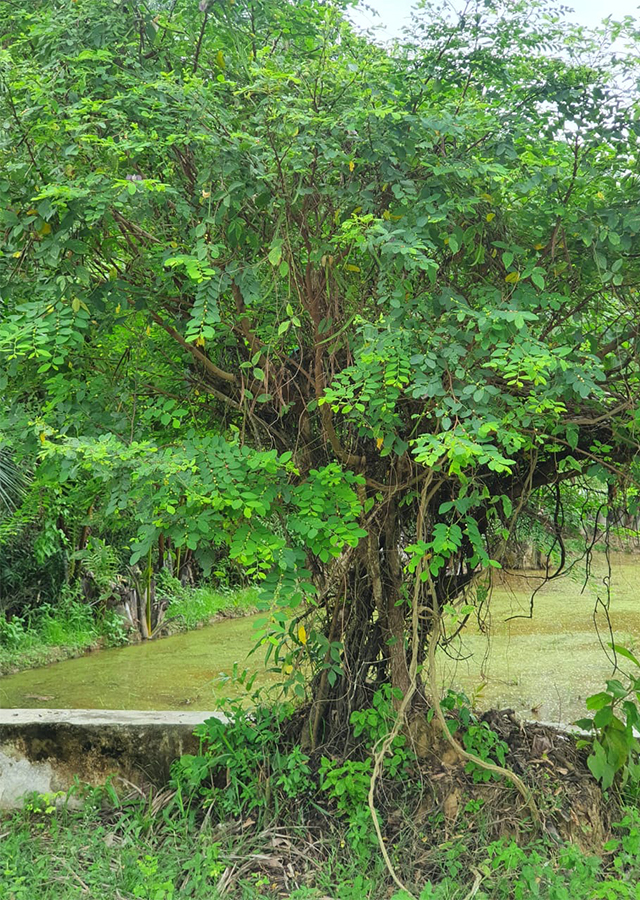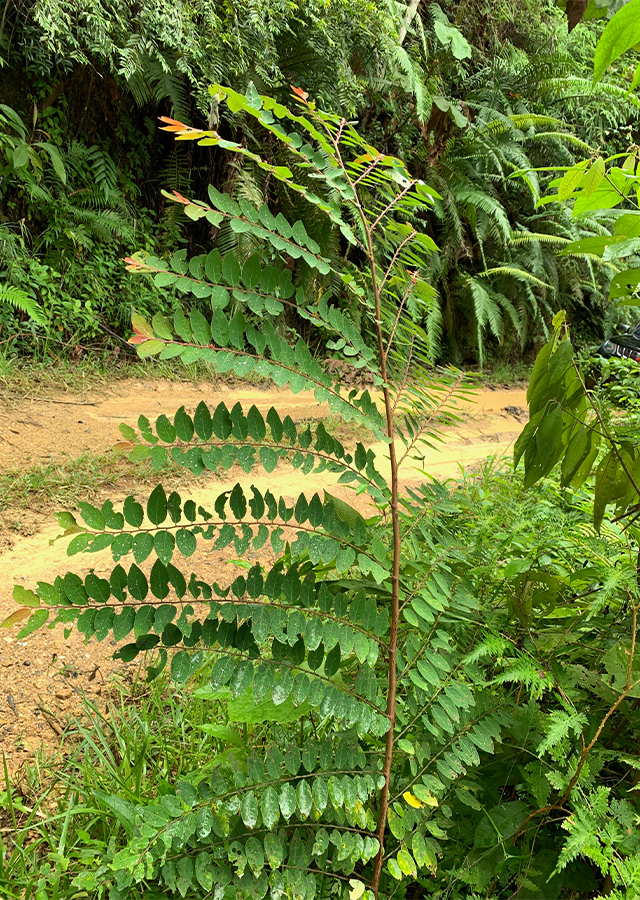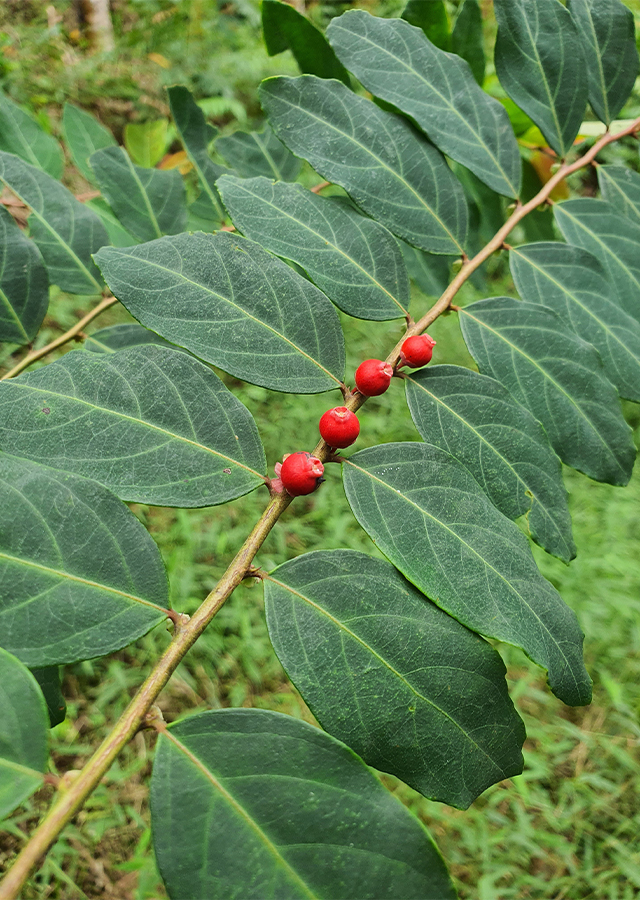Coral Berry Tree
Breynia vitis-idaea (Burm.f.) C.E.C.Fisch.
Phyllanthaceae
Location in our garden
Principal



Synonym
Breynia keithii Ridl.
Breynia microcalyx Ridl.
Breynia rhamnoides Müll.Arg.
Habitus
Shrubs. A shrub or small tree, sometimes adopting a more or less climbing habit, growing up to 5 m tall
Part Used
Leaves
Bark
Roots
Stem
Growing Requirements
Full Sunshine
Habitat
Riverbanks
Forest
Coastal
Shrublands
Overview
Coral berry tree can be found in its native range in East Asia - Southern China, Indian subcontinent through tropical Asia to Indonesia. The plant is harvested from the wild for its use in traditional medicine.
Vernacular Names
Kaangplaa thale (Thailand), Shan qi jing (Chinese), Matang-hipon (Phillipines), Hime kobannoki (Japanese), Seruyan (Malaysia), Cu de (Vietnamese).
Agroecology
B. vitis-idaea is typically found scattered in evergreen trees, mangroves, swamp forests, bamboo thickets, along rivers and roads and along the shore, from sea level to an altitude of 800 m, on the edges of forests and clearings. It occurs on montane slopes and scrub in southern China at altitudes of 100-1,000 m.
Morphology
- Barks - yellowish grey.
- Leaves - distichous, simple, elliptic to elliptic-ovate, 1-3 cm long, margin flat.
- Fruit - pink, purple or dull red, round, somewhat fleshy, nearly spherical, about 5 mm in diameter, subglobose capsule, obscurely 6-lobed, fruiting perianth hardly enlarged.
- Flowers - very small, greenish or pink, axillary, solitary, and about 3-5 mm in diameter, the flowers lack petals and are dimorphic, with male flowers arranged toward the base and female flowers at the apex of each branch.
- Seeds - subtrigonous. 3-4.5 mm x 1.8-2.5 mm x 1.7-2.5 mm.
Cultivation
It can be propagated by seeds (generative propagation) and by stem cuttings (vegetative propagation).
Chemical Constituents
Benzoylarbutin, breynioside B, glycosides, tannins and 6-O-benzyl-α-D-glucose, beta sitosterol, triacontane, ceryl alcohol, lanosterol, pentatricontanoic acid, canangaionoside, breynin, saponins, flavonoids.
Traditional Medicinal Uses
- Antioxidant, radical scavenging, anti-cancer, larvicidal, adaptogenic, antihyperglycemic, hypolipidemic, hepatoprotective, inhibiting properties of tyrosinase have been demonstrated in studies.
- The bark is astringent and used to avoid hemorrhages.
- Infusion of leaves for fever in warm water.
- In traditional Chinese medicine, it is used to treat chronic bronchitis and wounds.
- Used in Ayurveda for leucorrhea, edema, menorrhagia, diabetes, tooth decay. Root decoction is used as mouthwash in India.
- The mature stem is used as a herbal toothstick by Tamil ethnic groups.
Part Used
Reference Sources
- Tropical Plants Database, Ken Fern. (2014). Breynia vitis-idaea. http://tropical.theferns.info/viewtropical.php?id=Breynia+vitis-idaea. 21-10-2020.
- Biodiversity India. (No date). India Biodiversity Portal. Breynia vitis-idaea (Burm.f.) C.E.C.Fisch. https://indiabiodiversity.org/species/show/228948. 26-10-2020.
- Stuart Xchange. (2016). Philippine Medicinal Plants. Matang-hipon. http://www.stuartxchange.com/Matang-hipon.html. 21-10-2020.
- PROSEA. (2016). Breynia vitis-idaea (PROSEA). https://uses.plantnet-project.org/en/Breynia_vitis-idaea_(PROSEA). 21-10-2020.
- Kato, M. & Kawakita, A. (2017). Obligate Pollination Mutualism. Springer, Tokyo-Japan.


